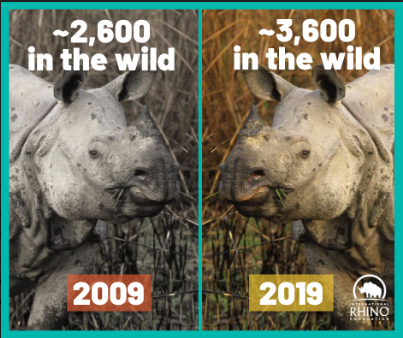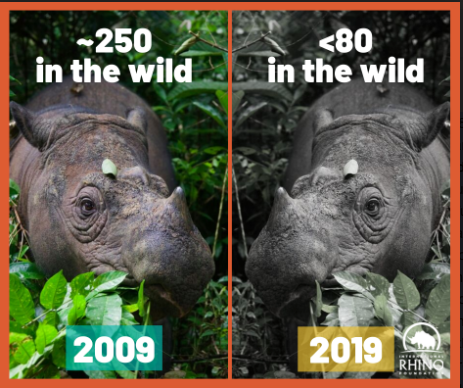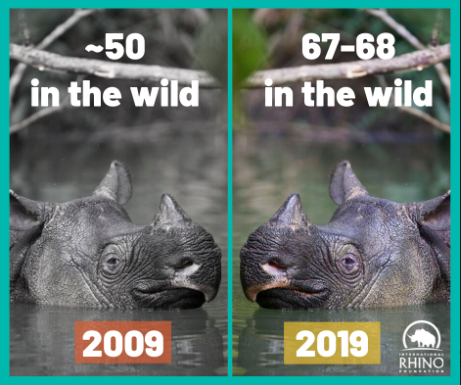2019 State of the Rhino Report: Efforts in India and Nepal lead to increases in the numbers of the greater one-horned rhino
This is the third post in the 2019 State of the Rhino Report series. View previous posts: Report Highlights and Africa.
Strict protection by government authorities in India and Nepal, has resulted in remarkable conservation successes for the greater one-horned, or Indian, rhino which has rebounded from fewer than 100 individuals to more than 3,600 today.

Beginning in 2009, IRF and its Indian Rhino Vision 2020 partners worked together to establish a new Indian rhino population in Assam’s Manas National Park. Eighteen animals have been born in the park, and there have been two births so far in 2019, which brings the population to 36 animals.
These efforts demonstrate that rhinos can recover on their own if they are given adequate space and are free from the outside pressures of poaching and habitat loss.
In Indonesia, fewer than 80 Sumatran rhinos remain. The species is likely now the most endangered large mammal on Earth, with declines of more than 70 percent in the past 20 years.

Three small, isolated populations exist on Indonesia’s Sumatra Island, plus a tiny handful of animals in Indonesian Borneo. Remaining populations are heavily guarded by anti-poaching units, but despite protection, numbers continue to decline.
In 2017, the Government of Indonesia developed a Sumatran Rhino Emergency Action Plan, and in 2018, IRF and partners formed the Sumatran Rhino Rescue project, with plans to rescue rhinos and bring those with reproductive potential into large, semi-natural breeding and research facilities like the Sumatran Rhino Sanctuary to increase population numbers.
Javan rhinos, numbering no more than 68 animals, are found only in Indonesia’s Ujung Kulon National Park, where they are heavily protected. There has been no poaching in Ujung Kulon in more than 25 years.


One thought on “2019 State of the Rhino Report: Efforts in India and Nepal lead to increases in the numbers of the greater one-horned rhino”